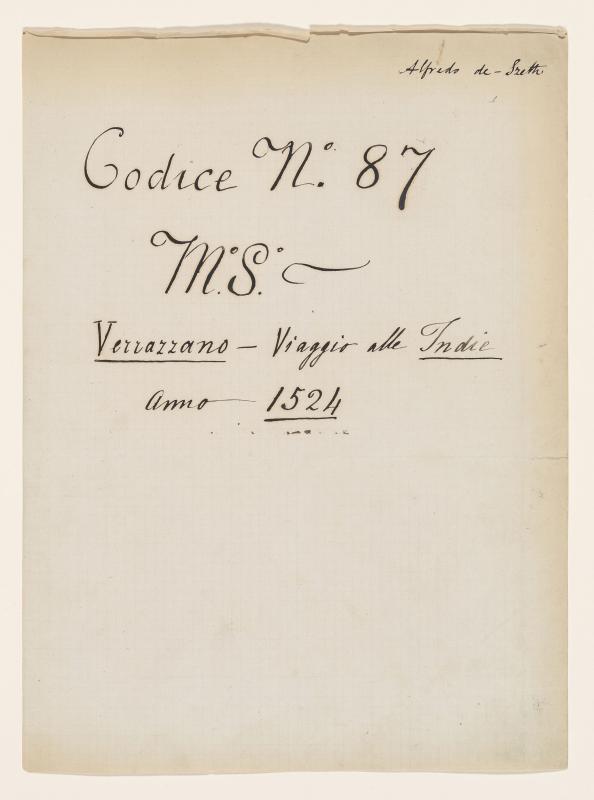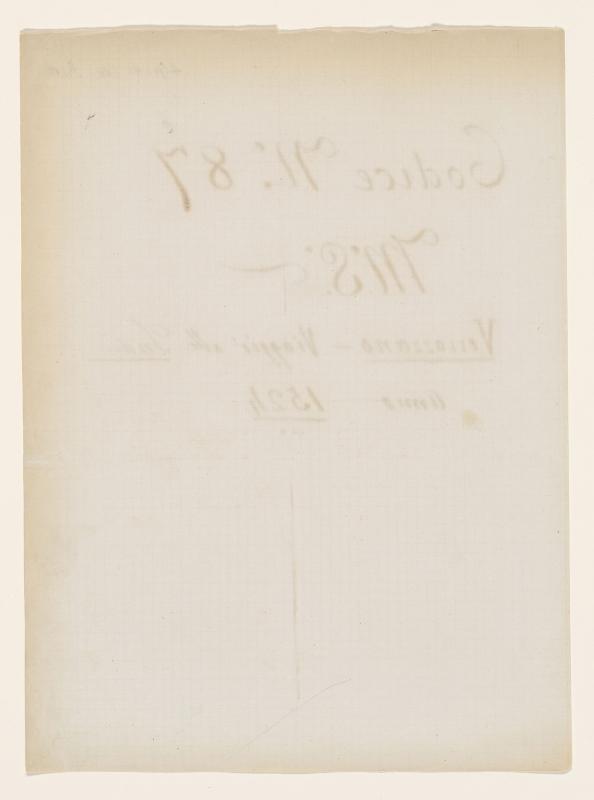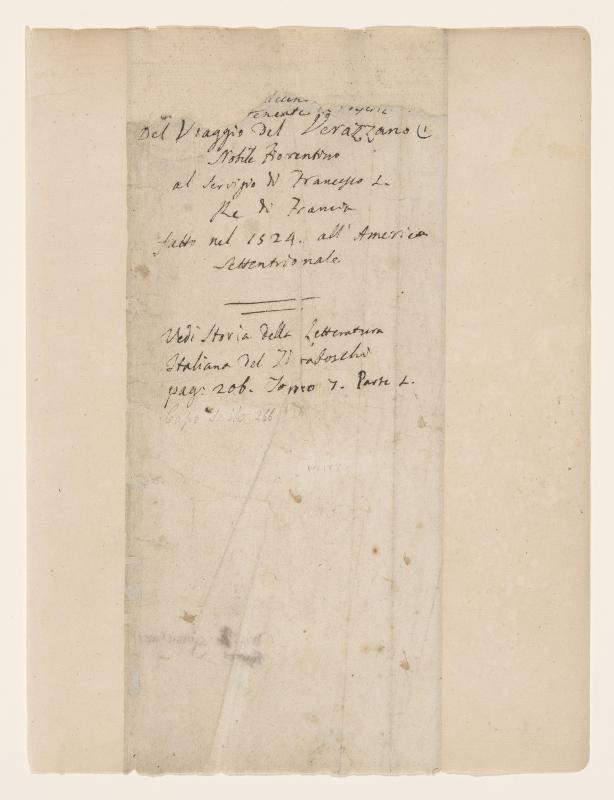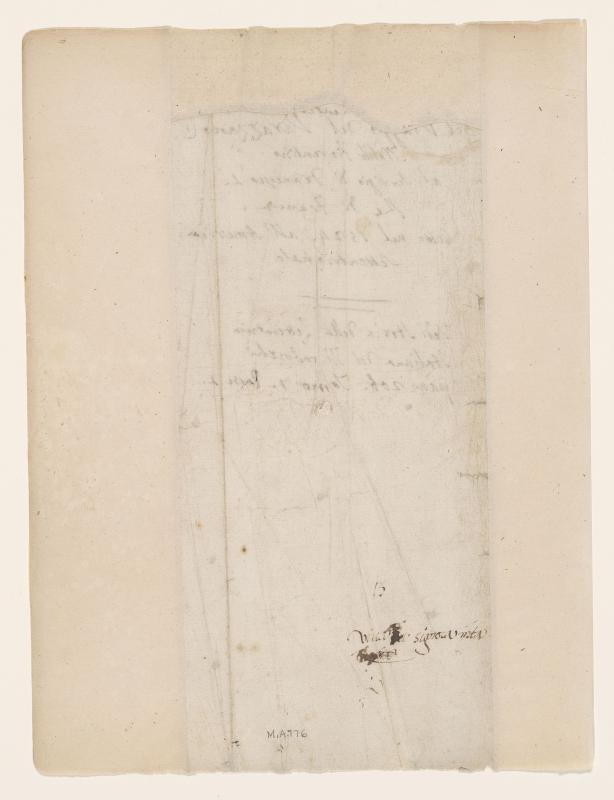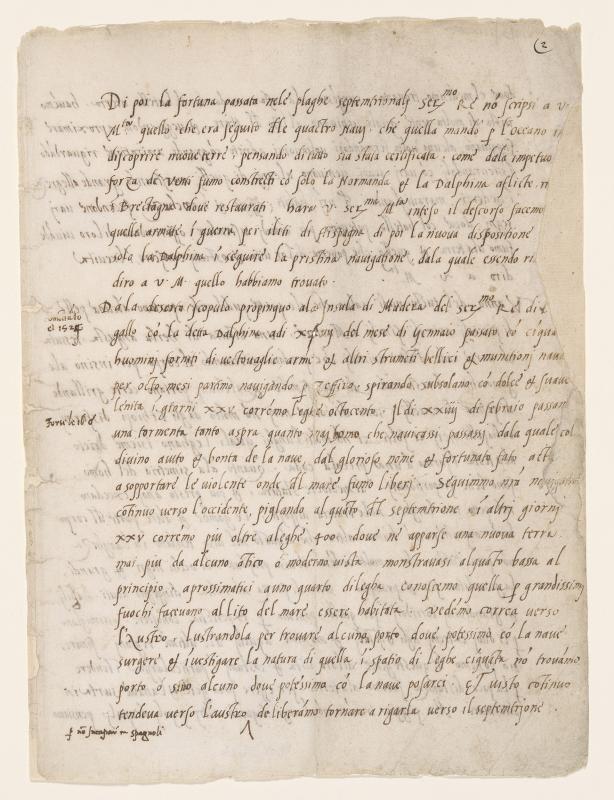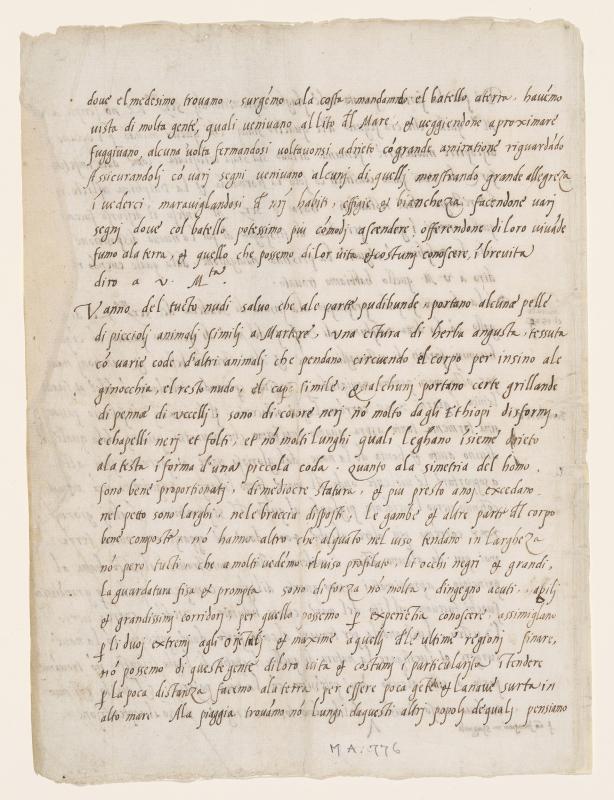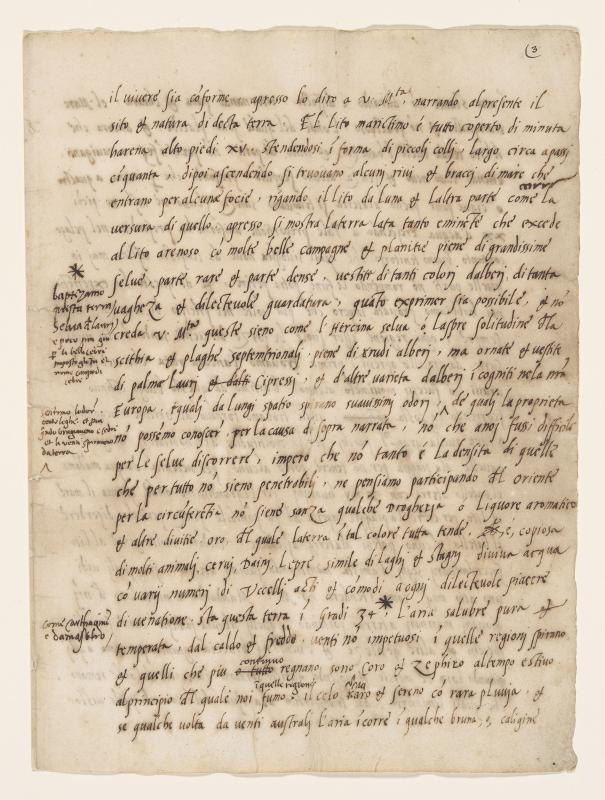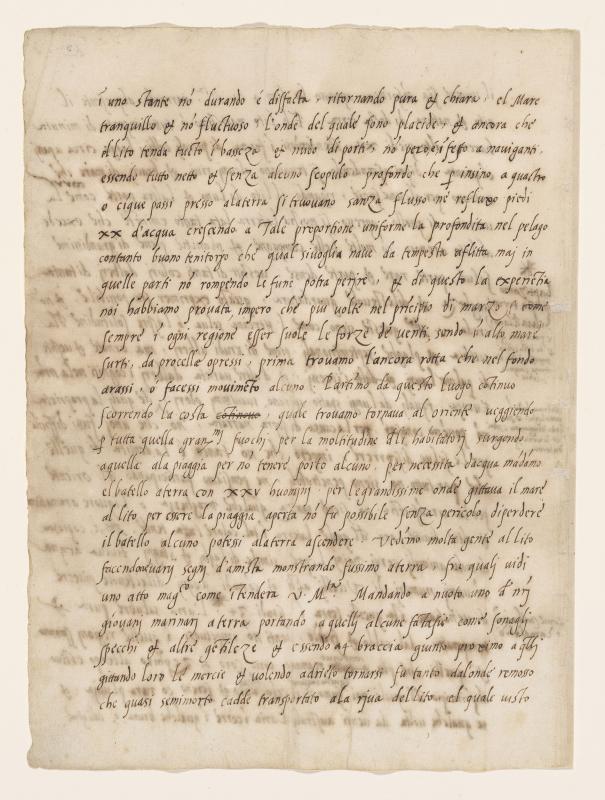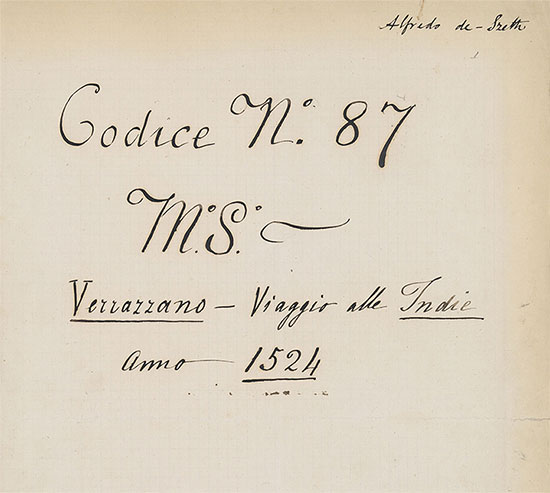
Giovanni da Verrazzano (1485–1528)
Letter to François I, describing his voyage along the east coast of North America in 1524
MA 776
On April 17, 1524, the Florentine explorer Giovanni da Verrazzano (1485–1528) became the first European to see and describe New York Harbor. His narrative of the voyage, preserved as a letter sent to his principal backer, King François I of France (1494–1547), also contains the first European account of Native Americans north of Florida’s gulf coast. The Morgan owns the most important copy of Verrazzano’s letter: written in Italian by a scribal hand, the letter is significant for offering the fullest and earliest account of the voyage. Verrazzano revised the text, as indicated by handwritten notes in the margins, before it was translated into French and sent to the king. But for many years there was a problem with this story, as the French letter to the king does not survive and there was no official record in the French governmental archives documenting this journey. Scholars knew a printed copy of the text in the Navigationi et Viaggi of geographer and writer Giovanni Battista Ramusio (1485–1557), as well as a few manuscript versions. But it was not until 1908, when the present letter surfaced in Rome, that historians generally accepted the facts of the voyage, which has been further documented by additional discoveries over the course of the last century.
In 1523 François I asked Verrazzano to explore areas of the New World and possible new trade routes for France. Though the beginning of the voyage was beset with difficulties, by early 1524 a single ship, Dauphine, sailed across the Atlantic Ocean and landed near what is now the Pamlico Sound area of North Carolina’s Outer Banks. From there Verrazzano headed north. Along the way, he entered New York Harbor and viewed the lower and upper bays, the Narrows, and probably the mouth of the Hudson River, though did not explore it. He called this land Angoulême (King François I was Count of Angoulême) and the bay “Santa Margarita,” named after the king’s sister Marguerite of Navarre. Verrazzano and his crew encountered the Lenape people, long settled on the land they knew as Mannahatta, from where they rowed out in canoes to greet the voyagers. From here Verrazzano sailed north to Narragansett Bay, Cape Cod Bay, Maine, Nova Scotia, and finally Newfoundland.
After returning to France that summer, Verrazzano prepared a letter describing his voyage for the king, no doubt drawing upon a logbook or logbooks kept at sea (though not surviving today). The manuscript preserved at the Morgan was written as a draft of Verrazzano’s letter to François I and bears the explorer’s handwritten revisions to the text. It also references Verrazzano’s future audience with the king, in which matters could be discussed in further detail. Verrazzano later shared this draft letter with Florentine merchants in Lyons (Leonardo Tedaldi and Thomaso Sartini) and the Roman banker Bonacorso Rucellai. Later the letter was owned by the historian and antiquarian Paolo Giovio (1483–1552). When Giovio’s library was dispersed in the nineteenth century, the manuscript passed to the daughter of Count Francesco di Giovio, a woman named Donna Chiara Giovio de Szeth. It eventually came into the hands of Count Giulio Macchi di Cèllere, of Rome, where it was discovered and published by an Italian scholar in 1908. At this stage the letter picked up the name “Cèllere Codex,” named after its owner. By 1911 Cèllere had sold the manuscript to Galerie Imbert, where J. Pierpont Morgan acquired it that same year.
Introduction by Philip S. Palmer, Robert H. Taylor Curator and Department Head of Literary and Historical Manuscripts, 2025
The digitization of this manuscript was made possible by the generous support of the Italian Heritage Cultural Committee of New York, whose President and Board members visited the Morgan in December 2024 to view the manuscript during the 500th anniversary year of Verrazzano’s voyage.

